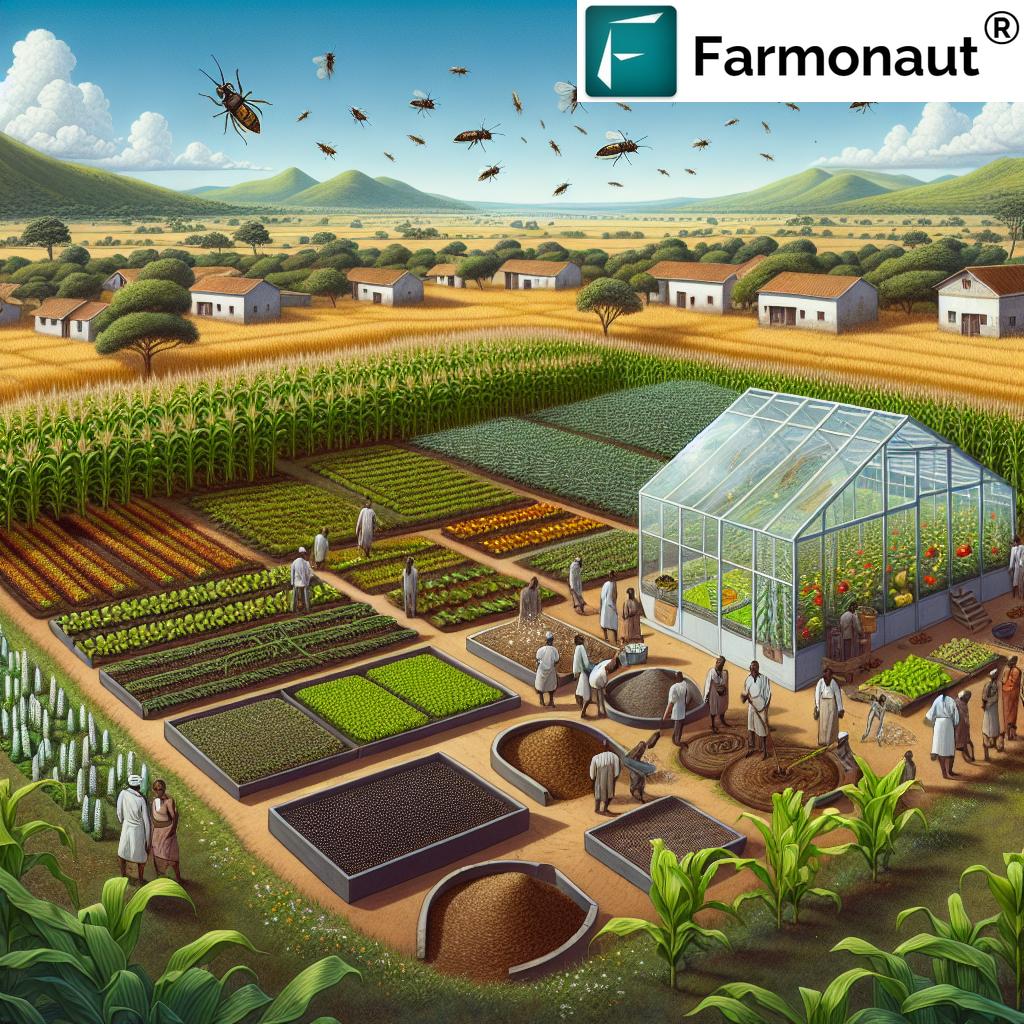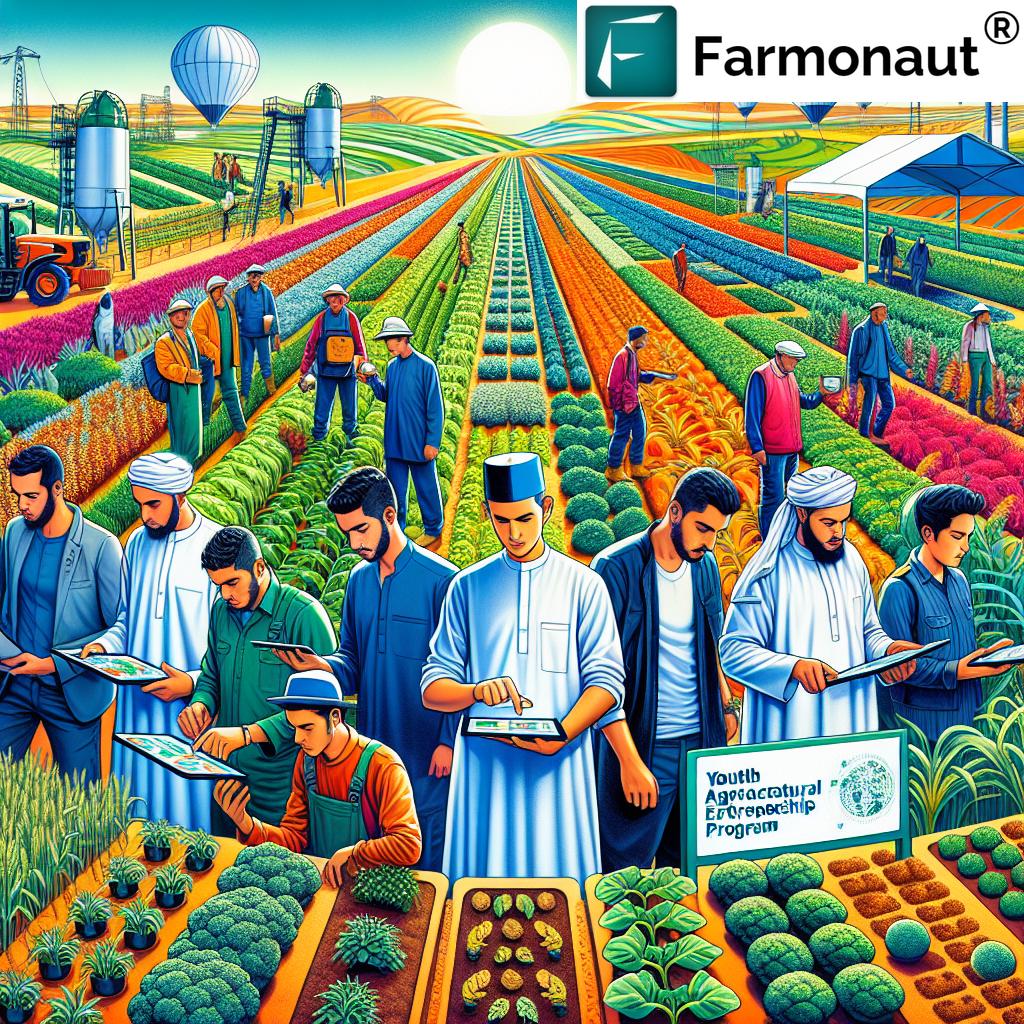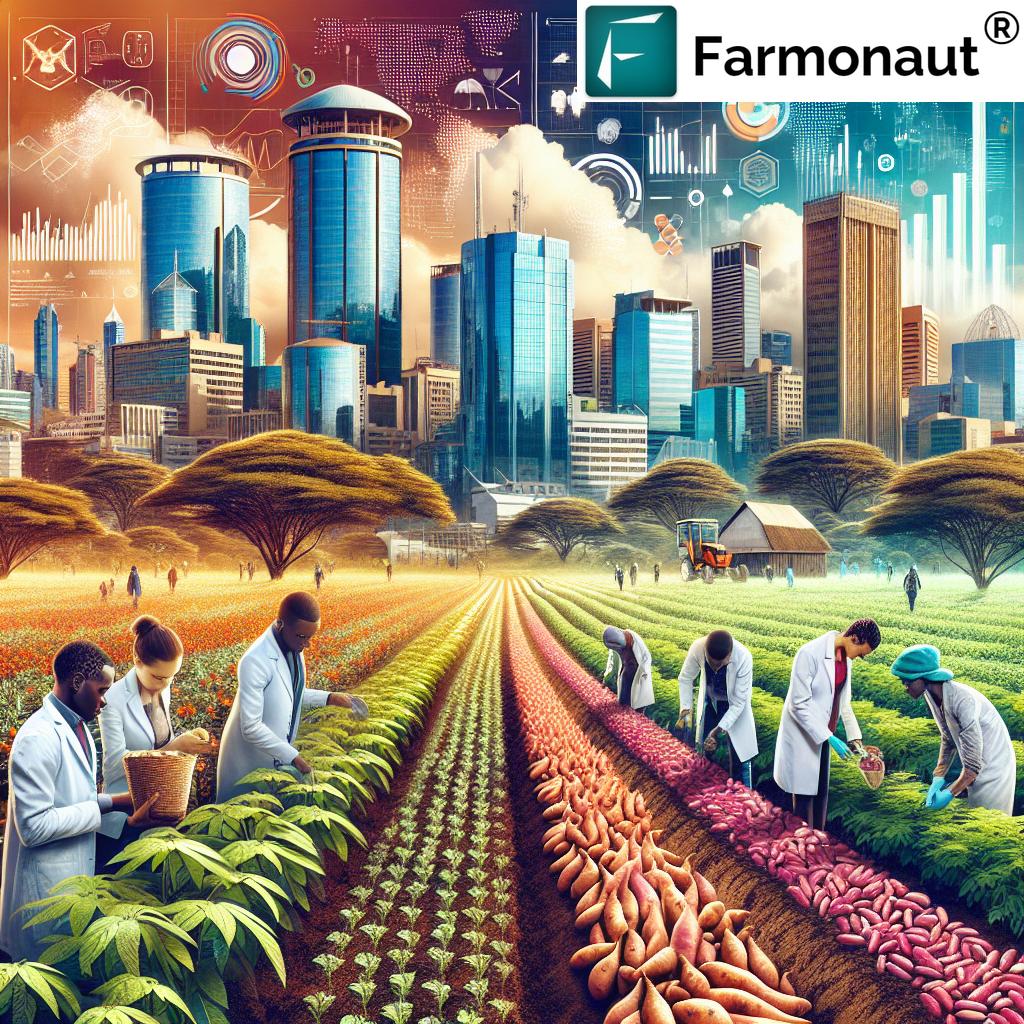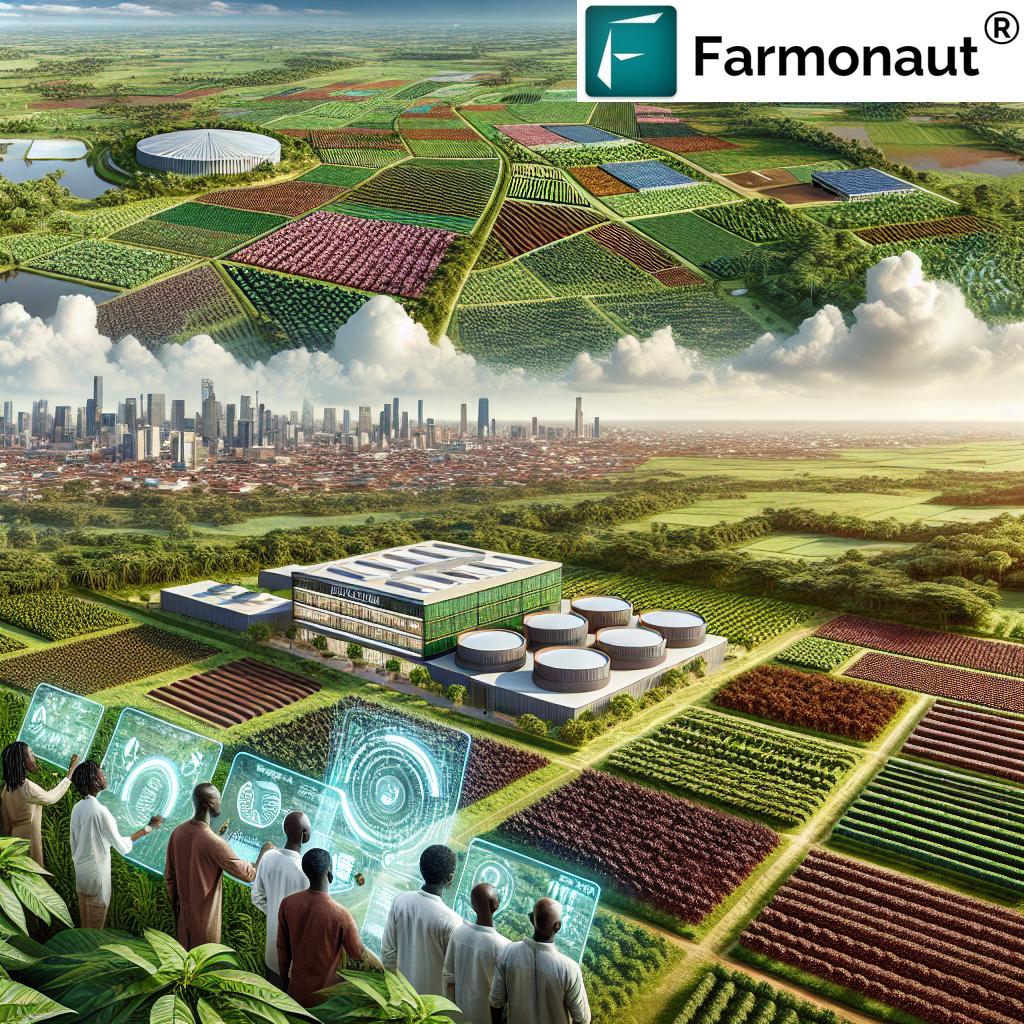Togo Agricultural Modernization: 10-Year Sustainable Plan
“Togo’s 10-year plan aims to increase sustainable agricultural productivity by 50% through climate-smart practices, benefiting thousands of farmers.”
Introduction: Togo Agricultural Modernization at a Glance
In June 2025, Togo reached a powerful milestone that set the stage for a new era in African agriculture. The World Bank Group (WBG) approved an extensive $300 million program to boost the modernization of the agriculture sector in Togo, empowering smallholder farmers and positioning Togo as a dynamic regional hub for agribusiness and animal nutrition. This sustainable agriculture transformation program launches a bold, 10-year sustainable plan — an ambitious drive to unlock agribusiness investment, foster climate-smart innovation, and promote eco-friendly development throughout the sector.
At the heart of Togo’s 10-year strategy lies a vision to catalyze agricultural transformation by strengthening agricultural institutions, enhancing access to finance, technology, and mechanization for smallholder farmers, optimizing water and land management for sustainable expansion, and scaling innovation for a greener future. With over 340,000 farmers including 114,000 women and 102,000 youth, the program promises the creation of more than 72,500 jobs, delivering tangible results for producers and communities across the country.
As we delve into the pillars, actions, and impacts of the Togo agricultural modernization, let’s explore how this transformative plan is reshaping the landscape of Togolese agriculture — and how modern digital technologies from platforms like Farmonaut can support such ambitious goals.
Why Modernize Agriculture in Togo?
Togo’s agricultural sector has long been the backbone of its economy, employing the majority of its working population and providing livelihoods for rural communities. However, traditional practices, limited access to finance, and climate variability have constrained productivity and economic growth.
- Low yields and land degradation due to subsistence farming methods
- Poor access to modern agricultural inputs (such as seeds, fertilizers, and equipment)
- Inadequate irrigation and water management in Togo
- Limited smallholder farmers finance and lack of risk mitigation mechanisms
- Weak market links and value chains restrict farmer incomes
- Youth unemployment and untapped innovation potential
To address these pressing challenges, Togo’s government, in collaboration with international partners and leveraging the expertise of organizations like the IFC and MIGA, is embracing a holistic approach to sustainable transformation. The Sustainable Agriculture Transformation Program is designed to:
- Promote private sector participation in agribusiness
- Foster climate-resilient, profitable, and scalable models for smallholder farmers
- Attract agribusiness investment in Togo to boost jobs and exports
- Reduce environmental impact while ensuring sustainable food systems
Sustainable Agriculture Transformation Program: 10-Year Plan Overview

The Sustainable Agriculture Transformation Program for Togo (ProMAT 2025–2034) is an integrated, two-phase initiative:
- Phase One: $150.2 million investment to kick-start agricultural modernization with immediate priorities.
- Phase Two: $149.8 million to build on achieved momentum, expand impact, and mainstream sustainability.
Key areas covered in the program:
- Strengthening agricultural institutions and governance
- Expanding irrigation, drainage, and water management services (covering 7,200 hectares)
- Enhancing farmer access to mechanization and financial services
- Promoting adoption of climate-smart agriculture technologies and practices
- Facilitating private investment and participation in agribusiness
- Empowering women and youth through job creation and skills development
- Ensuring sustainable management of 50,000 hectares of productive land
- Transforming subsistence agriculture into vibrant, market-oriented farming via programs like Planned Agricultural Development Zones (ZAAP)
“Agribusiness investment in Togo is projected to grow by 40% under the modernization plan, supporting eco-friendly innovation and rural development.”
Strengthening Agricultural Institutions: The Foundation of Togo Agricultural Modernization
No transformation is possible without strong, effective institutions. In Togo, the Agricultural Transformation Agency (ATA) is at the forefront, driving reforms and modern approaches in tandem with government bodies and development partners. The ProMAT initiative focuses on:
- Reinforcing governance, planning, and policy coordination at national and regional levels
- Facilitating public-private dialogues to shape actionable strategies
- Upgrading rural extension services to deliver modern tools and advisory on-site
- Fostering gender and youth inclusion through institutional policies
This robust institutional framework aims to create an enabling environment for innovation, investment, and large-scale ethical transformation.
Scaling Innovation & Climate-Smart Agriculture Technologies
A cornerstone of Togo agricultural modernization is the rapid scaling of climate-smart agriculture technologies and innovative practices. These shifts enable:
- Enhanced resilience to drought, floods, and climate variability
- Precision use of inputs (fertilizers, seeds, water) through smart farming
- Real-time crop monitoring for early detection and yield optimization
- AI-driven advisory services that bring modern agronomy to even remote fields
- Greater involvement of women and youth in tech-driven agriculture
Farmers across Togo are encouraged to leverage digital technologies offered by companies like Farmonaut, which delivers satellite-based monitoring, AI-driven advisories, and blockchain-enabled traceability via accessible apps and APIs. These advances support more informed decision-making, helping farmers improve productivity and profitability.
For agribusinesses and cooperatives seeking large-scale, integrated solutions, Farmonaut’s Large Scale Farm Management tools are ideal. They enable plantation management, resource allocation, and team coordination — all via a central dashboard.
With satellite and AI-powered monitoring, Togolese farmers and producers can:
- Track NDVI vegetation indices for early warning on crop stress
- Schedule precise irrigation events based on radar moisture maps
- Benefit from automated weather and pest alerts
- Understand and reduce carbon emissions using Carbon Footprinting features to support sustainable certification and compliance
- Confirm the journey of their agricultural products from field to market via Blockchain-Based Traceability
Additionally, Farmonaut’s API is available for developers and agritech startups who want to integrate satellite weather and field data into their own platforms — see their API documentation here and explore developer docs here.
Irrigation and Water Management in Togo: Laying Foundations for Resilience

A vital facet of modernization of the agriculture sector in Togo is the planned expansion of efficient irrigation, drainage, and water management services across 7,200 hectares. Sustainable water management is critical for climate adaptation and increased annual productivity.
- New irrigation infrastructure to increase cropping intensity and support dry-season farming
- Improvement of drainage systems to reduce flood risk and improve soil quality
- Adoption of water-saving technologies and precision irrigation
- On-ground training for smallholder farmers in climate-resilient water practices
By combining field-level knowledge with digital solutions (like Farmonaut’s satellite-based moisture mapping), Togolese farmers can make data-driven irrigation and water decisions. This approach helps optimize input costs, boosts yields, and protects fragile ecosystems.
Empowering Smallholder Farmers: Access to Finance, Mechanization, and Markets
Over 340,000 smallholder producers are at the heart of Togo’s agricultural transformation. Empowerment comes from three key access levers:
1. Smallholder Farmers Finance: Expanding Access and Driving Inclusion
One of the most significant constraints for smallholder farmers is lack of access to affordable credit. The modernization program aims to remove barriers to finance by:
- Improving validation systems (such as Farmonaut’s Crop Loan and Insurance Verification with satellite monitoring) to secure faster, transparent loan approvals
- Partnering with financial institutions to offer customized loan products for equipment, seeds, and expansion
- Promoting digital wallets and mobile banking for rural populations
- Providing insurance products to reduce climate and market risk
2. Mechanization: Modern Tools and Equipment for Productivity
Farmers who rely on animal and manual labor are often unable to keep up with modern market demands. The plan addresses this by:
- Facilitating farmer access to tractors, planters, harvesters, and modern irrigation equipment
- Offering training in equipment use and maintenance, focusing on women and youth
- Expanding contract farming models and shared mechanization hubs
3. Access to Markets: Strengthening Togo Agriculture Value Chains
Linking rural producers to urban, regional, and export markets is transformative:
- Consolidating value chains for major crops and livestock, connecting smallholders with agribusinesses
- Facilitating participation in digital marketplaces and international trade
- Promoting the use of blockchain-based traceability (see Farmonaut’s Traceability Platform) to build consumer trust
- Organizing producer forums to share best practices, foster market intelligence, and drive regional innovation
The expansion of development zones (ZAAP) signals a major shift from subsistence to sustainable, market-facing agriculture, where every producer can scale and thrive.
Boosting Agribusiness Investment in Togo: Private Sector Participation
A major goal of the 10-year plan is to promote private sector participation in agribusiness, making the sector attractive for both domestic and international investors. Key drivers include:
- IFC-led support for contract farming and high-impact industrial value chains
- MIGA-provided guarantees for trade finance on imports of fertilizers, seeds, and modern equipment
- Incentives for local and regional agribusinesses to expand operations and create rural jobs
- Facilitating the entry of digital platforms and agricultural technology providers to improve efficiency and monitoring
By mobilizing private investments in irrigation, seed systems, agro-processing, and farm management, the sector’s potential is unlocked for inclusive growth. This helps create new jobs, drives exports, increases food security, and spurs innovation among producers.
Digitalization & Modernization Across Togo Agriculture Value Chains
How the Plan Accelerates Digital Transformation
The government’s vision is built on digitalization of every stage of the value chain:
- Digital supply chain management — Platforms like Farmonaut offer real-time, satellite-based tracking of crop growth and yields across multiple locations and seasons.
- Digital extension and advisory — AI advisory systems such as Farmonaut’s Jeevn AI provide custom recommendations for crop choice, input use, irrigation scheduling, and risk alerts, all delivered via mobile devices.
- Digital trade — Transparent, blockchain-powered supply chain solutions help boost value and market reach for Togo’s agricultural brands.
- Digital financial integration — Satellite-aided insurance validation supports faster payouts and incentivizes lenders to support rural growth.
This powerful digital toolkit unlocks new levels of efficiency, transparency, and trust. It dramatically reduces post-harvest losses, cuts fraud, and drives sustainability at every step.
Farmonaut’s Fleet Management solution, for instance, helps agribusinesses optimize transport and logistics, ensuring timely delivery and reducing operational costs — a boon for scaling operations in new regional hubs.
Role of Technology Providers: Farmonaut’s Contribution to Togo’s Green Revolution
As agriculture becomes increasingly tech-driven, innovative platforms like Farmonaut are democratizing access to precision tools for even the smallest producers. Let’s examine what sets Farmonaut apart:
1. Advanced Farm Management for Every Scale
- Satellite-Based Crop Health Monitoring: Empowers farmers and agribusinesses by providing real-time NDVI, soil moisture, and crop health data without the need for costly field sensors or drones.
- AI-Based Advisory (Jeevn AI): Delivers weather forecasts, cropping strategies, and personalized risk management advice.
- Blockchain Traceability: Ensures complete transparency from farm to fork, reassuring global markets and buyers of product authenticity.
- Fleet and Resource Management: Streamlines logistics, tracks vehicle usage, and reduces fuel/maintenance costs for large-scale operations.
- Carbon Footprinting Tools: Assists users in monitoring, quantifying, and reducing their greenhouse gas emissions, aligning with global standards for sustainable farming.
2. Affordability, Accessibility, and Scalability
- Subscription-Based Model: Farmonaut makes advanced technology available through flexible, affordable plans suitable for individual farmers as well as regional government programs.
- API and App Integration: Seamless data access for ecosystem partners accelerates sector-wide digitalization — see Farmonaut’s API for easy integration and the full developer guide.
- Collaborative Approach: The platform’s modular design allows partners to select tools relevant to their goals and scale them with sector growth.
3. Empowering Togo’s Rural Population
- Gender and Youth Inclusion: Training, digital literacy, and new opportunities for women and youth empower marginalized groups and ensure broad-based benefits.
- Farmer-Centric Design: Local languages, field-tested UX, and in-app support remove technical barriers for Togo’s producers.
- Capacity Building: Farmonaut’s data-driven recommendations and remote advisory services multiply the impact of traditional extension staff.
All these capacities advance Togo agricultural modernization and are tightly aligned with the government’s priorities for 2025–2034.
Togo’s 10-Year Sustainable Agriculture Modernization Timeline
| Year | Modernization Initiative | Targeted Outcome | Estimated Quantitative Impact | Agribusiness/Farmer Benefit |
|---|---|---|---|---|
| 2025 | Launch of ProMAT, Institutional Reforms, Digital Extension Pilots | Robust governance structure; increased digital literacy | 10% increase in farmer digital adoption | Training for 10,000 farmers and extension agents |
| 2026 | Expansion of Climate-Smart Technologies & Satellite Monitoring | Enhanced climate resilience, reduced losses | -8% crop losses, +7% yield | AI-based crop advice for 35,000 farmers |
| 2027 | Mobilization of Private Investment & Mechanization Hubs | Larger investments, wider mechanization access | $15M in new investment, 1,200 new machines | 25% more efficient land prep/harvest |
| 2028 | Irrigation and Drainage Infrastructure Upgrade | Expanded irrigated area, reduced flood risk | +1,600 ha irrigated, -12% water waste | Higher cropping intensity, drought resilience |
| 2029 | Digital Value Chain and Blockchain Traceability Rollout | Greater export readiness, food safety | 80% certified traceability, +5% exports | Market access for 15,000 agribusinesses |
| 2030 | Expansion of Financial Products for Smallholders | Financial inclusion, reduced risk | 85,000 new insurance/loan users | Safer income, lower risk for 40,000 farmers |
| 2031 | Sustainable Land and Resource Management Training | Reduced emissions, improved soil health | -15% CO₂ emissions, +15% soil fertility | Certification for 30,000 climate-smart farmers |
| 2032 | ZAAP and Animal Nutrition Program Scale-Up | Livestock and crop diversification | +7,500 jobs created; +12% animal feed production | Expanded protein access for rural districts |
| 2033 | Full Digital Integration of Market, Extension, and Advisory | Efficient market linkage, high-value exports | 55% of value chains digitized | Higher producer prices, lower transaction costs |
| 2034 | Impact Evaluation, Scaling, and International Knowledge Exchange | Sustained growth, regional leadership for Togo | +50% sustainable productivity, 72,500 new jobs | Togo as West Africa’s agribusiness hub |
Challenges, Risks, and Opportunities
Delivering a 10-year agricultural transformation is not without obstacles. Key risks and mitigation strategies:
- Capacity & Skills Gaps: Addressed through continuous training, knowledge sharing, and digital literacy campaigns
- Climate Uncertainties: Mitigated by expanding climate-smart practices, insurance, and integrated resource management
- Financing Sustainability: Secured by blending public, development, and private investment, alongside strong monitoring and result-based frameworks
- Digital Divide: Tackled by subsidizing mobile tech, broadening rural broadband, and adapting digital platforms to local realities
- Social Inclusion: Ensured by prioritizing women/youth programs and transparent, participatory governance at all levels
The opportunities are even greater – including job creation, export expansion, global investment, and a model for climate-smart agriculture across Africa.
Frequently Asked Questions (FAQ)
1. What is the main objective of Togo’s 10-year agricultural modernization plan?
The primary goal is to transition traditional, subsistence agriculture into a modern, sustainable, and resilient sector. The plan emphasizes institutional strengthening, climate-smart practices, increased agribusiness investment, robust job creation, and the sustainable management of land and water resources.
2. How will smallholder farmers benefit from this modernization?
Smallholder farmers will gain easier access to finance, mechanization, markets, and digital advisory services. Training programs will upskill farmers, especially women and youth, while insurance and risk management tools will provide safety nets. The program also aims to connect them to value chains for higher, stable incomes.
3. How does the plan address sustainability and climate risks?
Through the adoption of climate-smart agricultural technologies, expansion of irrigation and drainage systems, efficient water/resource management strategies, and promotion of carbon footprint tracking to reduce emissions and enhance resilience to extreme weather events.
4. What role do agribusinesses and private-sector investors play?
They are encouraged to participate through contract farming, investment incentives, and digitalization support, especially in sectors like seed production, irrigation infrastructure, and agricultural processing. Their involvement is crucial for delivering innovation, finance, and high-value jobs in the sector.
5. How does technology, like the Farmonaut platform, support Togo’s transformation?
Farmonaut offers affordable, accessible technologies such as satellite-based farm monitoring, AI advisories, blockchain traceability, and digital fleet/resource management. These platforms help track productivity, support data-driven decisions, and build transparency and trust — all essential for successful agricultural transformation.
Conclusion: A Roadmap to Sustainable Agricultural Transformation in Togo
The Togo agricultural modernization journey is a blueprint for Africa’s green and inclusive future. With strong leadership, digital innovation, strategic investments, and a relentless focus on sustainability, Togo is well-positioned to rise as a regional leader in agribusiness, climate-smart production, and tech-driven rural development.
Farmers, agribusinesses, and government agencies alike are poised to reap the rewards: robust value chains, resilient food systems, higher incomes, and a sustainable environment for present and future generations.
For those seeking to integrate cutting-edge remote sensing, AI, and digital management into their agricultural activities, or for developers interested in building next-generation solutions for African agriculture, Farmonaut’s API and developer platform remain readily available.
With robust policy support, bold investments, and sector-wide adoption of sustainable, digital tools, Togo’s Agricultural Modernization Program (2025–2034) paves the road from subsistence to prosperity, climate risk to resilience, and isolation to integrated, global markets.
















